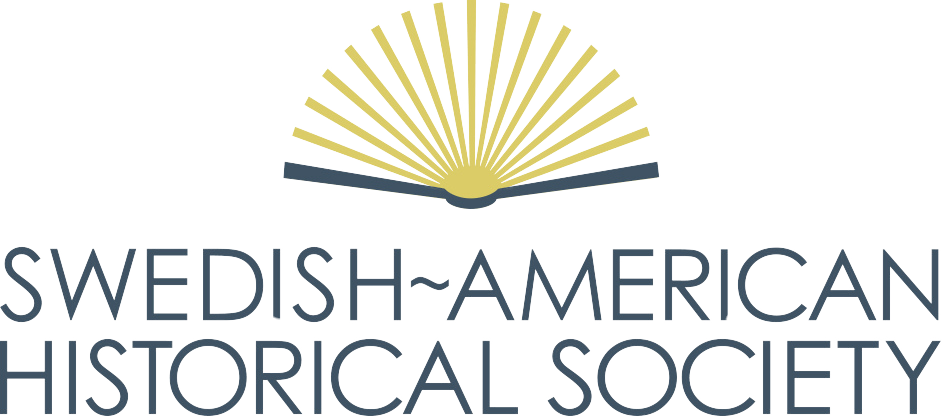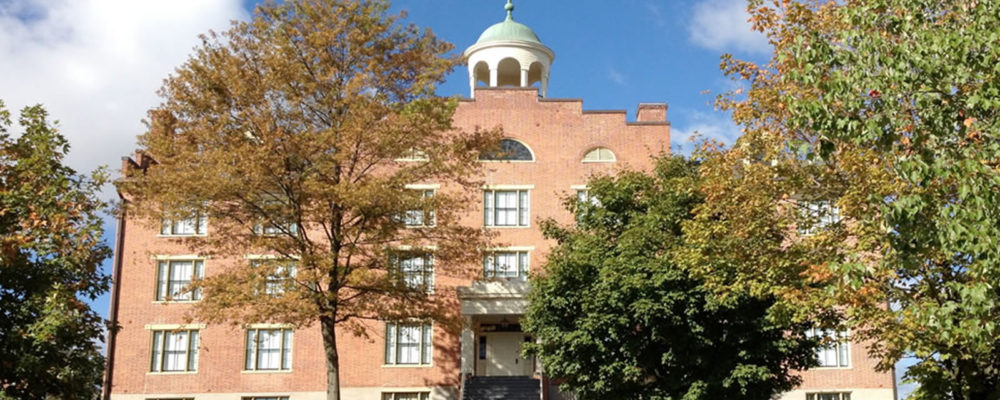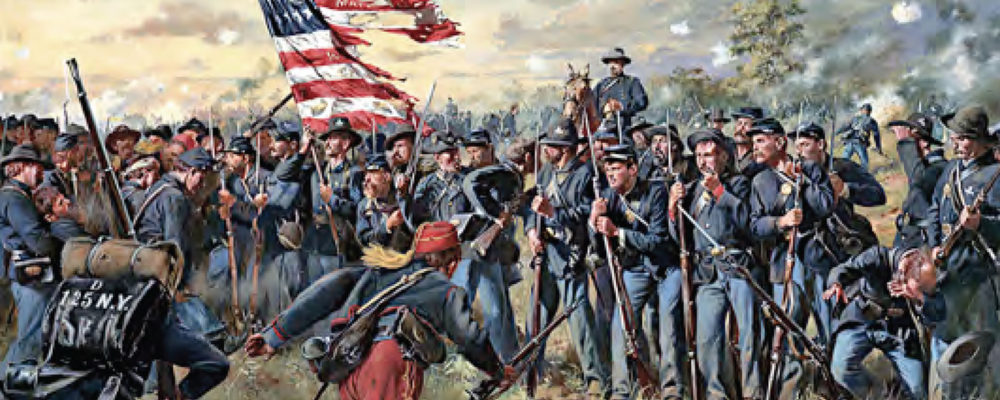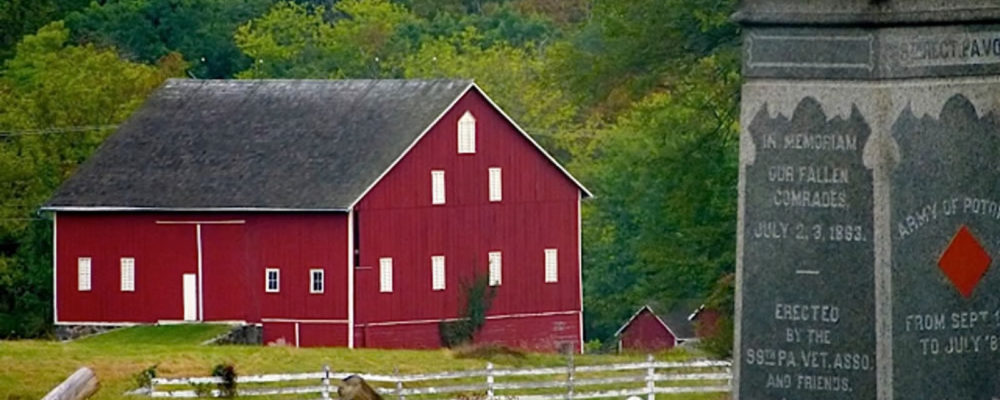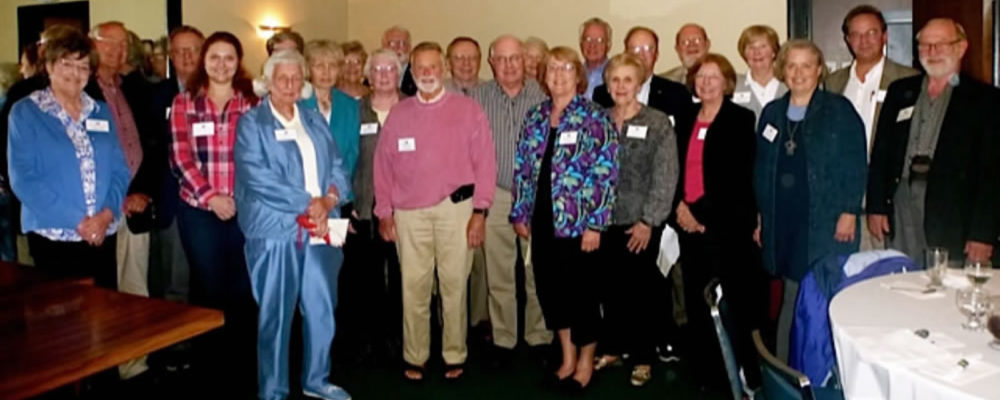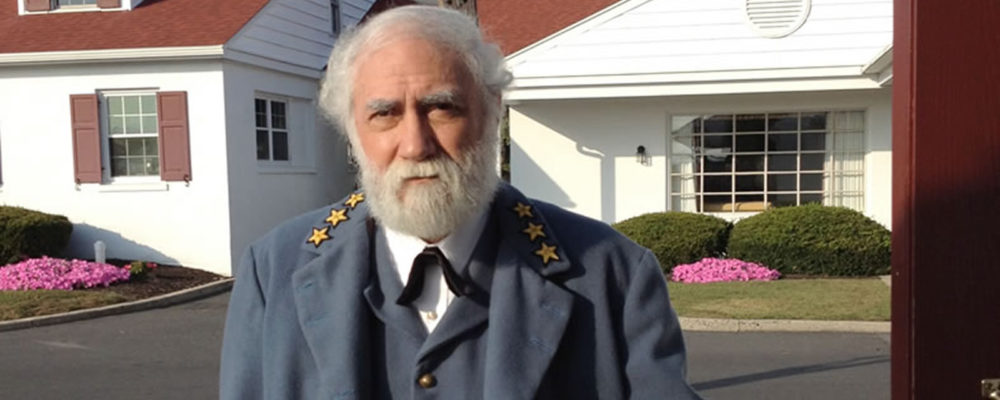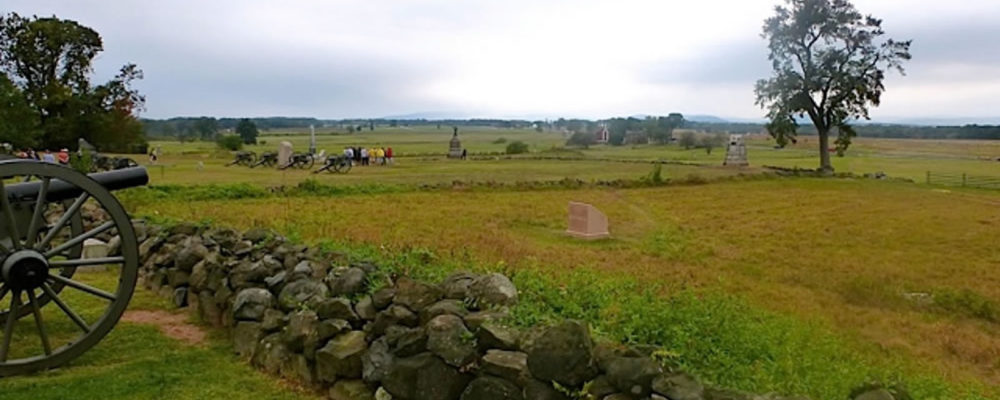by Eloise V. Nelson
Lovely fall weather and the lush green hills of southern Pennsylvania greeted members of the Swedish–American Historical Society who attended an enlightening weekend in Gettysburg September 20-22, 2013. Significantly, this year marks the 150th anniversary of the Battle of Gettysburg and Abraham Lincoln’s Gettysburg Address.
The first event for the twenty-six participants was a social time and tour of General Robert E. Lee’s headquarters, offered by our hotel, the Quality Inn at Lee’s Headquarters. This included a surprise visit from “Robert E. Lee,” who compellingly described incidents from the Confederate side. His wife “Mary” told of her sad year of having to flee from one place to another. We then followed Lee into the small house he had used as his headquarters, with its fine collection of Civil War artifacts.
The Quality Inn is on a historic property on the north edge of town where tourist cabins were originally built by a family named Larson. Today the hotel’s one-story u-shaped layout reflects this history while offering high-quality accommodations and amenities. It was conveniently located across the road from the battlefield, Seminary Ridge, and the Lutheran Theological Seminary, where much of our weekend was centered.
Our first dinner meeting was held in the Seminary Refectory. Our speaker was John Spangler, who related “Stories from a Seminary on the Frontlines of Religion and Civic Life.” A seminary administrator, he had been a planning director for the newly opened Seminary Ridge Museum, which we would visit the next afternoon.
Spangler described the three focus areas of the museum: The pivotal first day of the battle on Seminary Ridge; the care of hundreds of the wounded and dying as the seminary building became a Civil War field hospital; and the larger issues of faith and freedom.
Located in the original Lutheran Seminary building from Civil War times, this new museum opened on July 1, exactly 150 years to the day that the battle of Gettysburg began. The seminary’s cupola was used by Union Gen. John Buford as he surveyed the beginnings of the battle, the building was briefly overtaken by the Confederate side, then by the Union, finally becoming a makeshift hospital. The museum exhibits Civil War artifacts never shown before, such as a packet of letters to a wounded soldier found in the walls.
Saturday morning and afternoon were spent at the Gettysburg Battlefield. Participants first watched an impressive 21-minute film, “A New Birth of Freedom,” viewed the stunning Cyclorama, with its life-like panorama of the battle with gunfire sounds and smoke, then had time to view other museum exhibits, browse in the expansive gift shop, and have lunch in the cafeteria.
A two-hour guided bus tour in the afternoon took the group around the historic fields of the battlefield, past notable areas such as Little Round Top and the site of Pickett’s Charge, while stopping at several battle sites and monuments. The guide clearly described the three days of the Gettysburg battle, fought from various ridges, as both sides added troops daily. It finally culminated in the Confederates retreating and conceding to the Union side.
Our evening dinner meeting took place at a dining venue adjacent to our hotel. Our speaker was Maria Erling, board member of the Swedish-American Historical Society and professor of modern church history and global mission at the Lutheran Theological Seminary.
Speaking on “Christians and Slavery,” she explained how the various church bodies and Lutheran synods had differing views on slavery during the Civil War era, all based on their interpretations of the Bible. The Swedish-American Augustana Synod, and the Rev. T. N. Hasselquist, who was influential in the founding of this synod, were anti-slavery, while several other groups of Christians were pro-slavery or divided on the issue.
The Gettysburg battle was the most decisive battle of the Civil War but also the bloodiest, claiming 5,100 casualties. On November 19, Abraham Lincoln delivered his 273-word speech to thousands of people at the dedication of the National Cemetery of Gettysburg, eloquently connecting the sacrifices of the Civil War to “a new birth of freedom.”
